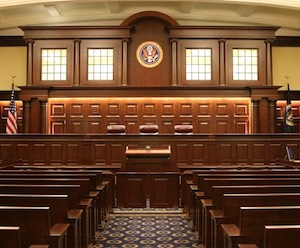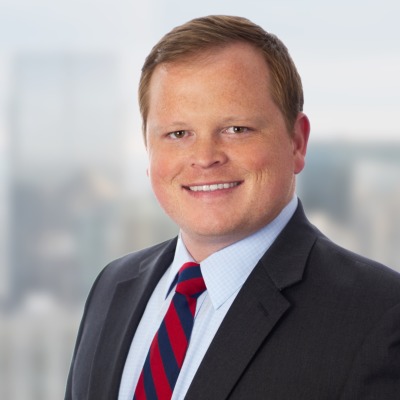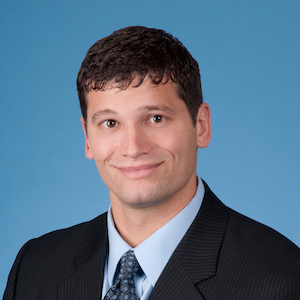Holding: The plain meaning of the claimed “protrusion” and “end plate” in this case does not encompass a “single, conically-shaped” end piece as found in Foundation’s accused product.
 The United States Court of Appeal for the Federal Circuit recently upheld the Central District of California’s ruling of summary judgment that certain accused products of Foundation Constructors, Inc. and Foundation Pile, Inc. (Foundation) do not infringe certain claims of U.S. Patent Nos. 7,914,236 (the ’236 patent) and 9,284,708 (the ’708 patent) (collectively, the patents-in-suit) after plaintiffs-appellants Steve Neville, Substructure Support, Inc., and TDP Support, Inc. (collectively, Substructure) appealed the district court’s ruling, as based on an improper claim construction. See Neville v. Found. Constructors, Inc., No. 2020-1132, 2020 U.S. App. LEXIS 27321 (Fed. Cir. Aug. 27, 2020) (Before Lourie, O’Malley, and Chen, Circuit Judges) (Opinion for the Court, Chen, Circuit Judge).
The United States Court of Appeal for the Federal Circuit recently upheld the Central District of California’s ruling of summary judgment that certain accused products of Foundation Constructors, Inc. and Foundation Pile, Inc. (Foundation) do not infringe certain claims of U.S. Patent Nos. 7,914,236 (the ’236 patent) and 9,284,708 (the ’708 patent) (collectively, the patents-in-suit) after plaintiffs-appellants Steve Neville, Substructure Support, Inc., and TDP Support, Inc. (collectively, Substructure) appealed the district court’s ruling, as based on an improper claim construction. See Neville v. Found. Constructors, Inc., No. 2020-1132, 2020 U.S. App. LEXIS 27321 (Fed. Cir. Aug. 27, 2020) (Before Lourie, O’Malley, and Chen, Circuit Judges) (Opinion for the Court, Chen, Circuit Judge).
The patents-in-suit relate to foundation piles, tubular structures driven into ground to provide a stable platform for foundations to be built over them. The foundation piles described in the patents-in-suit were configured to be driven into the ground through rotational torque. The specification included a description of how the rotational torque is applied through a “helical flight” similar to the helical structure of a screw. The patents-in-suit included described an end plate of the foundation pile – a bottom surface that closes the pile tip of the foundation pile off from the soil into which it is placed. Further, some embodiments described in the patents-in-suit included protrusions from the surface of the end plate configured to aid in the breaking up of soil as the foundation pile is inserted into the ground. FIG. 1 illustrates embodiments having such protrusions (17, 18) from the end plate (19):

The basis of Substructure’s challenge to claim construction focused on the construction of two claim limitations relating to the end plate, which separated the claims of the patents-in-suit into two groups.
The first set of claims required an “end plate having a substantially flat surface disposed perpendicular to the centerline of the tubular pile.” Representative claim 1 of the ’236 patent is produced below:
-
- A screw pile substructure support system, comprising:
a tubular pile having a centerline and a first diameter, wherein the tubular pile comprises a first cylindrical section and a second cylindrical section attached by a weld;
a substantially conically shaped pile tip sharing a centerline with the tubular pile, the substantially conically shaped pile tip having a first end and a second end, the first end being connected to the tubular pile and having a second diameter;
a helical flight attached to an exterior surface of the substantially conically shaped pile tip, wherein the helical flight extends along the exterior surface for a distance of at least one third of a circumference of the substantially conically shaped pile tip; and
an end plate fixedly attached to the second end of the pile tip, the end plate having a substantially flat surface disposed perpendicular to the centerline of the tubular pile;
wherein the first diameter is substantially similar to the second diameter.
(Emphasis added).
The second set of claims required “at least one protrusion extending outwardly from the end plate” with claim 1 of the ’708 patent representative:
-
- A screw pile substructure support system comprising:
a tubular pile having a centerline and a substantially constant diameter throughout a length of the tubular pile; and
a pile tip comprising:
a tapered portion comprising a first end having a first diameter and a second end having a second diameter, wherein the first diameter is greater than the second diameter and about equal to the diameter of the tubular pile, and wherein the first end is attached to the tubular pile;
a first helical flight attached to and extending along an exterior surface of the tapered portion;
an end plate closing the second end of the tapered portion; and
at least one protrusion extending outwardly from the end plate.
(Emphasis added.)
The district court granted summary judgment of noninfringement, holding that Foundation’s accused products did not include an “end plate” to a pile tip. More specifically, the district court held that the accused products “lack (1) an end plate having a substantially flat surface and (2) an end plate with at least one protrusion extending outwardly from it.” Substructure’s claim construction argument can be best summarized by an annotated photograph produced by Substructure’s expert:

During the district court trial, Substructure’s expert testified that the highlighted region of the accused Foundation product is an “end plate” having two “substantially flat surfaces” with a first surface facing the interior of the pile tip and a second surface that “interfaces with the point shaft.” Substructure’s expert further testified that the point shaft is a “protrusion” extending outwardly from the purported end plate. The district court held that the plain meaning of “end plate having a substantially flat surface” did not encompass an interior surface facing into the rest of the pile tip as required by Substructure’s infringement theory. The district court examined the intrinsic record and decided that the “substantially flat” surface of the end plate referred to the side of the end plate facing outward. Because there is no end plate in the accused Foundation product, the district court reasoned that there could not be a protrusion extending outwardly from the end plate.
On appeal, Substructure challenged the claim construction of “end plate having a substantially flat surface” and “protrusion extending outwardly from the end plate.” The Federal Circuit agreed with the district court that the substantially flat surface element did not refer to any interior-facing surface, and referenced the specification, which is silent with respect to any interior surface of the end plate. With respect to the limitation on the protrusion from the end plate, the Federal Circuit also agreed with the district court. The Federal Circuit reasoned that because the accused Foundation product is a single, conically shaped piece, there is no demarcation between where an “end plate” would be and the “protrusion” that should extend outwardly from the end plate. Accordingly, the Federal Circuit considered Substructure’s arguments, and finding them unpersuasive, affirmed the district court’s ruling of noninfringement at summary judgment.

![[IPWatchdog Logo]](https://ipwatchdog.com/wp-content/themes/IPWatchdog%20-%202023/assets/images/temp/logo-small@2x.png)


![[Advertisement]](https://ipwatchdog.com/wp-content/uploads/2024/04/UnitedLex-May-2-2024-sidebar-700x500-1.jpg)
![[Advertisement]](https://ipwatchdog.com/wp-content/uploads/2024/04/Artificial-Intelligence-2024-REPLAY-sidebar-700x500-corrected.jpg)
![[Advertisement]](https://ipwatchdog.com/wp-content/uploads/2024/04/Patent-Litigation-Masters-2024-sidebar-700x500-1.jpg)

![[Advertisement]](https://ipwatchdog.com/wp-content/uploads/2021/12/WEBINAR-336-x-280-px.png)
![[Advertisement]](https://ipwatchdog.com/wp-content/uploads/2021/12/2021-Patent-Practice-on-Demand-recorded-Feb-2021-336-x-280.jpg)
![[Advertisement]](https://ipwatchdog.com/wp-content/uploads/2021/12/Ad-4-The-Invent-Patent-System™.png)






Join the Discussion
4 comments so far.
Pro Say
September 4, 2020 04:18 pmTFCFM: “The Queen of Hearts could be the Chief Judge of the Federal Circuit!”
Um . . . I thought she already was. 🙂
Anon
September 4, 2020 03:28 pmstepback @ 2,
Magritte’s The Treachery of Images comes to mind.
(as does phlogiston and the aether)
stepback
September 4, 2020 12:28 pmTCFM @1
Aren’t all Alice/Mayo rejections based on imaginary elements?
Example: Mother Nature coming down from the mountain top and proclaiming what her laws (“Laws of Nature”) are. I’m holding my breathe waiting for that imaginary event to become reality.
TFCFM
September 4, 2020 09:54 amMy favorite quote from the opinion:
“The claimed surface cannot be an imaginary one…”
Seldom do I laugh out loud when I read an opinion. I wonder if J. Chen was trying to be funny?
Can you imagine the utter fun if claimed elements in accused embodiments could be “imaginary”? The Queen of Hearts could be the Chief Judge of the Federal Circuit!